#American green treefrog
Explore tagged Tumblr posts
Text
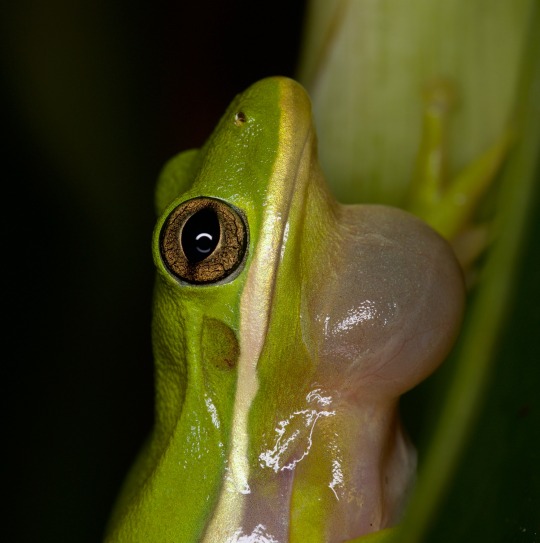
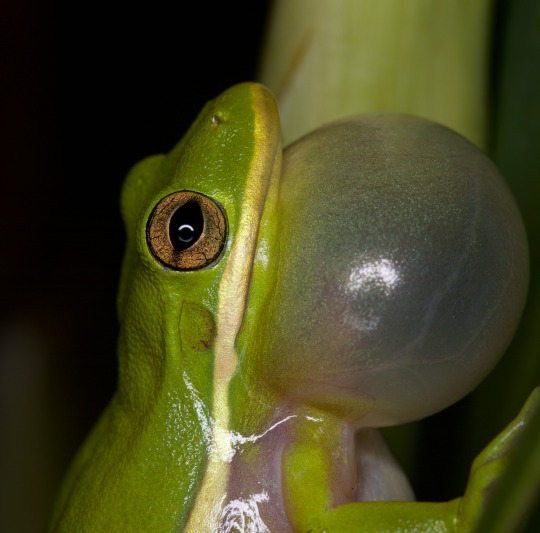
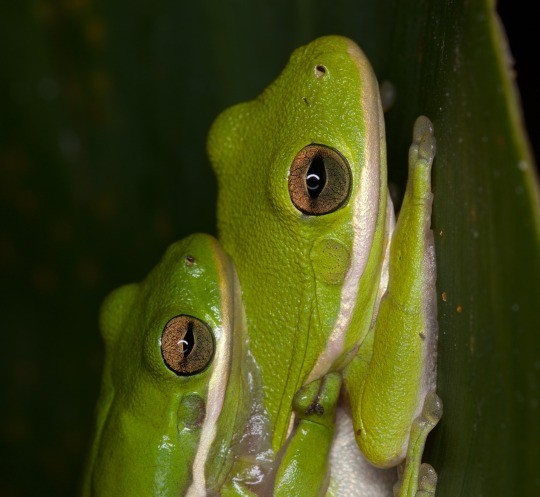
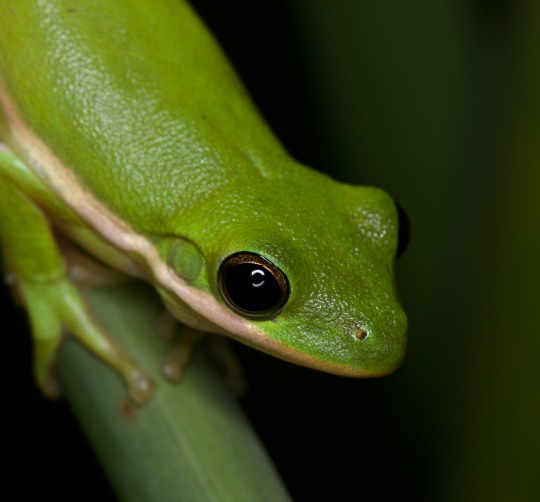
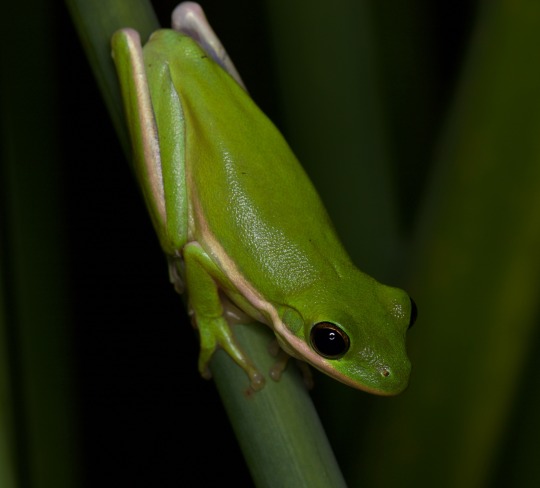
With my new camera and macro lens, my frog photos are fresher than ever before! My first subjects were these American green tree frogs :3
#IM LITERALLY SO EXCITED#I CAN TAKE MY DREAM PHOTOS NOW#and there’s more to come…#I can’t promise all my photos will be like this#but yeah#big things coming#frog blog#frog blogging#frog#frogs#frogposting#amphibian#amphibians#frogblr#herpetology#herping#treefrog#tree frog#American green tree frog#American green treefrog#green treefrog#green tree frog
146 notes
·
View notes
Text
funny little guy dinner time
me when i see a bug:

#frog with actually good aim?? no way#tree frog#green tree frogs#frog#American green treefrog#frogs#frogposting#frogblr#treefrog#amphibian#critterposting#my bucket 🪣
20 notes
·
View notes
Text
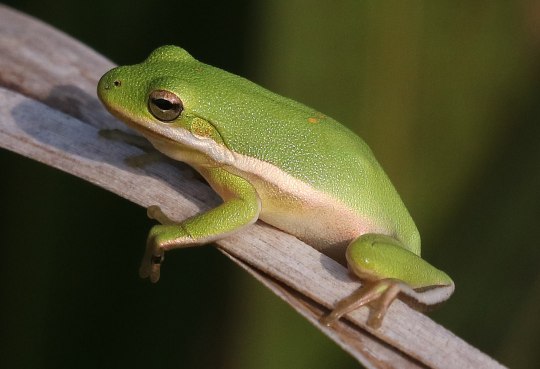
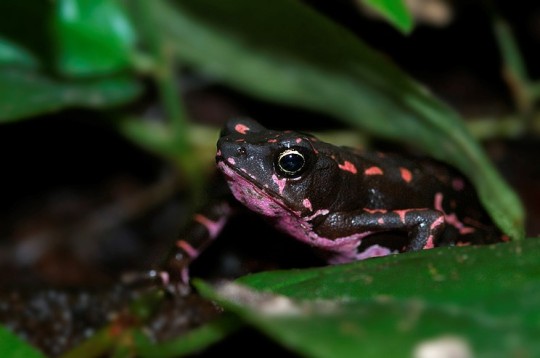
American Green Tree Frog: Naturally found in the Southeastern United States, they prefer swamps and densely foliaged lakesides as habitats. Certain coastal populations, however, have developed a tolerance to moderate salinity in water thanks to different processes that regulate osmosis. Males form large choruses during mating season, and as a result are forced to modify their calls in frequency and duration to stand out from the others and draw attention from females. In some areas, they even compete with other species such as the invasive Osteopilus septentrionalis and modify their call to be more clearly heard. Females prefer lower-frequency calls, so if a male notices that his is distinctly higher-frequency than others in the area, he may forego calling altogether and attempt to ambush a female instead.
Purple Harlequin Toad: Native to French Guiana, it was found to likely belong to the Guiana Shield clade of harlequin toads through genetic testing done in 2020. Different populations separated by location vary significantly in size, with females from the Sophie region being smaller than males – contrary to all other populations of this species. Unfortunately, they are threatened by local logging and the chytrid fungus.
3 notes
·
View notes
Text
388 notes
·
View notes
Text
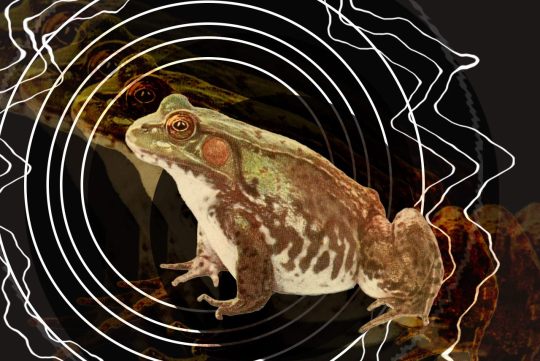
IT WAS LATE ON JULY 16, 1957, and Charles M. Bogert was in a recording booth in Highland County, Florida, with a pair of singers who wouldn’t sing. The burgeoning producer, who had left a busy life in New York to chase talent in the Sunshine State, had heard the two perform live that very evening, in a chorus of hundreds. He had plucked them from the crowd, and thenushered them out of the swampy night and into this soundproofed room. But his would-be stars—out of their element, lacking inspiration—were silent. So Bogert took out a pair of headphones and played them a recording of their own voices from earlier, amid the chorus. Instantly they began an unrestrained duet: BOOP! BOOP! BOOP — WAMP — BOOP — WAMP — BOOP — WAMP! The booper here is a barking treefrog (Hyla gratiosa), while the wamper is a hybrid frog, thought to be the offspring of a barking and a green treefrog (Hyla cinerea). Theirs is a standout performance on Sounds of North American Frogs, originally released on Smithsonian Folkways Recordings in 1958, and re-released at the end of 2023 by the same label...
38 notes
·
View notes
Text
It's a received wisdom that amphibians are intolerant of salinity in their water. With the usual caveat that Rana (or Fejervarya) cancrivora, a superficially ordinary Rana-like frog from Asia, is 'the only marine amphibian' and is presented as almost a miracle of nature. In fact, prehistoric amphibians were preserved in saltwater environments, and a few species of salamanders and frogs are tolerant of mildly brackish conditions.
One study investigated the salinity tolerances of tadpoles, belonging to a few species of North American frogs. All of the species investigated had near-perfect rates of survival at 5 parts per thousand of salinity. Where estuaries are of such a low salinity, it is clearly the freshwater components of estuarine biota that predominate. Nonetheless the salinity is elevated sufficiently at only 5 ppt, to qualify such water as brackish. The tadpoles of all the species suffered and died at higher percentages of salinity.
Thus it can only be remarkable when amphibians survive, and thrive, at higher salinities than 5 ppt. A large meta-analysis of amphibian salt tolerance, revealed that the majority of amphibian occurrences in brackish environments, predictably involved low salinities of about 5 ppt or below. Of the others, most involve salinities up to about 10 ppt. For contrast, seawater has a salinity of 33-38 ppt, and is usually communicated as 35 ppt, as though it were the same everywhere.
A salinity of 10 ppt is still at the low end of brackish salinities, below a specific gravity reading of 1.01. Therefore it is below the salinity expected to be maintained I a standard mangrove tank. A salinity of merely 5 ppt, is below 1.004. The mangrove associated R. cancrivora, is however able to complete it's life cycle, where the specific gravity would be 1.02.
It is also more significant when aquatic life stages are tolerant of saltwater, because amphibious, terrestrially motile animals may move to find freshwater. A number of species of amphibian adults, such as toads and mole salamanders, have been recorded in the field, in and around waters more saline than their proven or probable physiological tolerance.
Rana cancrivora are observed in the field to be at least temporarily present in waters with full marine salinity. Tadpoles of this species tolerate this, but the adults seem to have an upper limit of tolerance that is lower than their tadpole stages, at 28 ppt. Other amphibians with a fairly good physiological tolerance of salinity, seem limited to water where it is no more brackish, than 10 ppt or close readings.
These include the American bullfrog (Rana catesbiana), green treefrog (Hyla cinerea), Cuban treefrog (Osteopilus septentrionalis), yellow-bellied toads (Bombina variegata), common platanna (Xenopus laevis), and tiger salamander (Ambystoma tigrinum). Few amphibians tolerate higher than 10 ppt.
Adult cane toads (Rhinella marinus) live around waters with a salinity close to 15 ppt, although its life cycle is known to be impaired at salinities as low as 8 ppt, and 12 ppt is lethal to their tadpoles. Thus R. marinus, although they forage in coastal areas where the salinity is higher, are really among those amphibians bound to lower salinities of around 5 ppt or lower.
Which is to say, the aquatic life stages of an amphibian with amphibious or terrestrial adults, may be essentially a freshwater element that is present in certain estuarine environments. Some snakes and turtles similarly frequent mangroves and saltmarsh habitats, but require environmental freshwater, for example, moving to freshwater in order to drink, but feeding in brackish water.
This is the hybridity of the estuarine biota, with its marine and freshwater components, and also the bivalence of most amphibian life cycles, being able to breed in one environment, even microenvironment, whilst exploiting elsewhere. Typical amphibian life cycles are not inferior to those of reptiles and mammals, or the amphibians would not be so ubiquitous.
Which does in fact raise the question, of why there aren't any truly marine frog species. R. cancrivora and at least two other ranids, demonstrate that amphibians can actually evolve physiological tolerance to elevated natural salinities. Although this seems more common in some clades than in others. Asking the question is like asking why certain successful fish clades have remained essentially freshwater animals, such as cyprinids, loaches, tetras, and for the most part, catfishes.
Surely more than one factor is responsible, and possible explanations won't be mutually exclusive, when it comes to explaining why or why not. But competitive exclusion by clades that are established and dominant in saltwater environments, is a limit upon the range of niches, that are available for colonization, by intrusive pioneers moving down from upriver.
Adult frogs do not do very well in fast flowing waters, so they are unlikely to do very well where the tide is powerful. Some anurans have specialized tadpoles, bearing derived lifestyles and morphologies, that are appropriate to habitats such as fast flowing streams. But in such environments, fish competitors are relatively few. In the sea, frog tadpoles without mobile, paired hydrofoils, would need to compete against fishes with them, and other successful competitors.
3 notes
·
View notes
Note
First i must apologize I have a tendency to forget that tumblr - even when we're all 'on' - is not live interaction and additionally you can't actually read my mind 😅
This was in reaction to seeing your ... delightful?? .. new frog. In such a state. And I got nervous 😋🦀💖

Annon... I´m gonna cry... I love you♡♡♡ you´re making me do happy jumps♡
And I understand fully what you mean about "reading minds" if you can call it that, we´re all there at times!
I hope this is you trying to get me to talk about my wonderful frog Kaj because that´s what I´m gonna do know XD
-
This is Kaj - named after my second favorite show as a child - he´s 25 cm long, and he´s a treefrog, there didn´t stand which one but my best guess is a red eyed tree frog, he just doesn't have the blue stripes, he could also be a Agalychnis moreletii (Morelet's tree frog) but he doesn't have black eyes and Morelet´s are known for their black eyes (a nickname of theirs is black eyed frog).
He could also be an American green tree frog, but his feet are a bit too pigmented, and back a bit to light for that, although the eyes would match there.
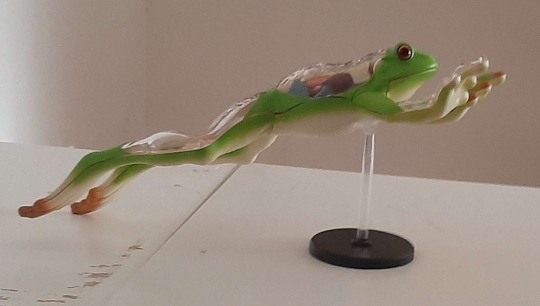


Actually he´s a woman as he has an ovary and oviduct (the blue stuff you can see below his urostyle) but I didn´t know that until I unpacked him, where I already had named him
Going with the idea he´s a Morelet (as that´s what he looks most like) he would be around 60mm (f-54 m-60/64)
Red eyed tree frog gets around 6/7 cm (f-7,5 m-5)
All in conclusion he´s a tree frog. Which kind of one? Karl.
And no, the crabs need not fear, he´s much too small to be of any danger in the wild, and my Kaj is made of plastic so he doesn't really jump or eat, unfortunately.
Although some crabs might want to watch out for the Goliath frog... (world's biggest frog at around 32 cm and 3.3 kilograms)
#im always so nervous if my english is good enough and if i have misunderstood something because of it#no art just talk#kaj the frog#frog#frogs#i dont know how to replay when people gives me compliments#they make me so happy and i cant even get it down in words so i end up usually just giving them a thank you but i mean so much more#if any better frogs experts can help me out please do#this is just a take out of my own knowledge#ive always had an oppositions with reptile and amphibians#mostly because my dad talked about how he grew up with turtles fish reptiles and frogs#but the frogs just kicked extra hard this last month and they have been filling almost every minut of my days in some way#ask
7 notes
·
View notes
Text
Bite-Sized! Monday Update 1
I have found all beasts that will fill the bestiary for the game.
Lizards in this world are called Drakes and there are quite a few to find, such as:
Broad-Headed Skinks
Coal Skinks
Common Five-Lined Skinks
Eastern Glass Lizards
Little Brown Skinks
Six-Lined Racerunner
Slender Glass Lizard
There is a single feline beast available to fight which is a bobcat.
Fish are another section in the bestiary. Consisting of:
Black Crappies
Bluegills
Bowfins
Common Carp
Red Swamp Crayfish
Warmouths
Different birds, which are referred to as Raptors, are some of the most difficult enemies. These birds are:
American Kestrels
Butcher Birds
Carolina Wrens
Crows
House Sparrows
Northern Cardinals
Red-winged Blackbirds
Song Sparrows
Rodents can also be found across the region. These rodents consist of:
Chipmunks
Common Muskrats
House Mice
Moles
Pocket Gophers
Shrews
Squirrels
Water Drakes, also known as amphibians, are there to defeat in combat. There are many to encounter, such as:
American Bullfrogs
American Green Treefrogs
Eastern Newts
Fowler’s Toads
Gray Treefrogs
Green Frogs
Marbled Salamanders
Spotted Salamanders
Spring Peepers
Woodhouse’s Toads
Snakes, also known as Wyrms, prowl the area. These deadly ambush predators are:
Dekay’s Brownsnakes
Eastern Garter Snakes
Eastern Hog-nosed Snakes
Glossy Swampsnakes
North American Racers
Plain Bellied Water Snakes
Red-bellied Snakes
Rough Greensnakes
Western Ribbon Snakes
Ending off the list of beasts are the Wyverns, which is the name for bats. These Wyverns include:
Big Brown Bats
Eastern Red Bats
Evening Bats
Hoary Bats
Mexican Free-tailed Bats
Silver-haired Bats
Southeastern Myotis
Tricolored Bats
There will also be insectoid enemies that you will be able to fight. Can you guess what area in the Americas this game's first setting takes place in?
#ttrpg#fantasy#ttrpg design#bug#insects#roleplay#arachnid#moth#butterfly#dragonfly#bugcore#millipede#centipede#grasshopper#bee#hymenoptera#cicada#diptera
3 notes
·
View notes
Text
Video description: Chart showing audio clips of various American frogs with months labeled at the top. As the play bar moves through the months, the frog calls active at those months play.
First are Wood Frog, Boreal Chorus Frog, and Spring Peeper. Northern Leopard Frog joins almost immediately. American Toad and Gray Treefrog join together. Wood Frog then ends, followed by Boreal Chorus Frog and Spring Peeper. Green Frog enters around the time Boreal Chorus Frog and Spring Peeper end. Shortly thereafter, American Bullfrog enters. Northern Leopard Frog ends, then American Toad and Gray Treefrog end together, then the last two continue together until Green Frog cuts off shortly before American Bullfrog.
End ID
36K notes
·
View notes
Text

This is an American Green Treefrog who hangs out on my deck.
1 note
·
View note
Note
Very excited you like my frogo. There are ten in total. We had a huge rain come in that lasted for two days and so they were gone, hunting and probably enjoying the nice weather. I've been waiting for them to return and now they are back! We have two that hang out on one of our hummingbird feeder. They are Gray treefrogs. Sorry- I'm training to be a herpetologist so... I know things pfft. I'll try not to bore you with that stuff. I have called the bigger one Nectar and the little one my grandmama named Nancy. We have seven little American green treefrogs and they doesn't have names but we have been lovingly been calling them days of the week. Then the last two are Shelly and Shelby. They stay on the shell decoration. They are Cope's green treefrogs. Thank you for letting me talk about my frogs. I'll stop boring you now ^^.





WOWOWOWOW!!! SOOO MANY!!!! so so so cool!! i love the pic where theyre all of the window LOL thats funny
9 notes
·
View notes
Text

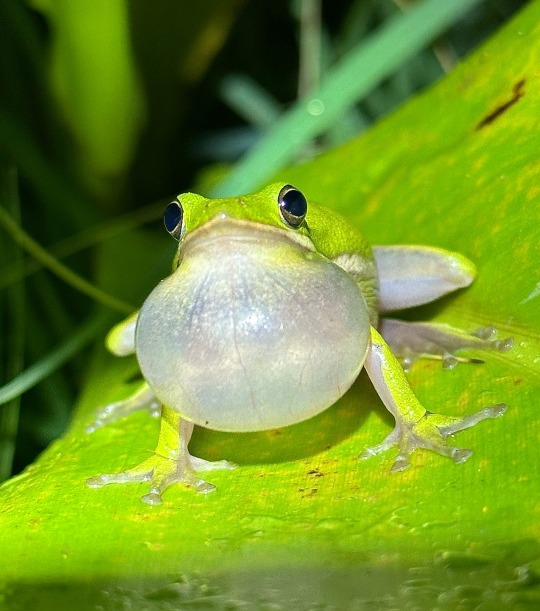
Frogs be like
#I peaked tbh#THESE ARE MY BEST SHOTS#Such a good night omg#FROG MOMENT#american green tree frog#green#tree frog#frog blog#frog blogging#frog#frogs#frogposting#amphibian#amphibians#frogblr#herpetology#herping#treefrog#it doesn’t get better than this
2K notes
·
View notes
Text
Mural at infant school in Brazil - crowdfunding campaign
youtube
https://youtu.be/OhFp7ym5bIc
Original campaign: https://chuffed.org/project/infant-school-mural-brazil
What and where
We are painting an 85 metre mural at João Batista Cardoso infant school in São Luiz do Paraitinga, Brazil with the participation of the children, parents and teachers.
The mural will transform the wall into bright, colourful and engaging space for the whole community to enjoy, especially the children as they walk to and from school.
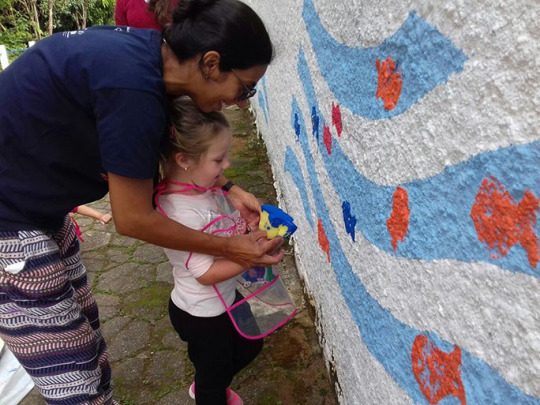
Why
The infant school takes approximately 180 children from 3-6 years old and is compulsory as the first stage of schooling in Brazil. The school provides a wonderful space for young children to play and learn but as part of a small rural town it lacks the funds to spend on anything other than the normal day-to-day running costs of the school. For this reason we are using crowdfunding and asking you to help us realise the project.
We strongly believe that participatory art projects bring people together in a creative, constructive and positive action that benefits both the individual participating and their wider community. Mural projects nurture and inspire creativity in children and adults alike and can boost morale, community cohesion and create a sense of pride and ownership over a public space.
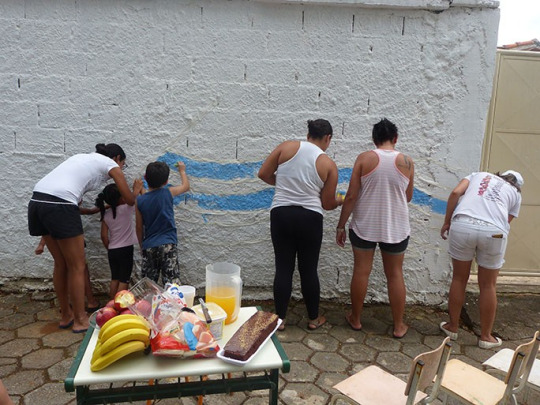
How
Our community artist and project leader Andy will organise and implement the painting in conjunction with the director, teachers and parents of the school. Andy is an experienced community artist and has spent the last five years working in Brazil running various participatory art projects for children and young people with different charities and NGOs.¹
We will run scheduled sessions with the different classes for the children to participate in the painting as well as inviting and encouraging parents to participate as well.

Design
The design depicts many of the animals that are native to this region of Brazil and also the Paraitinga river which runs by the side of the school and from which the town gets its name.
The design of the mural is simple and geometric, this creates an impactful visual style whilst at the same time allowing for everyone to take part in painting as the design can be ‘painted by numbers’.
Mural plan to scale:

Details of each animal:

Capivara / Capybara – Hydrochoerus hydrochaeris
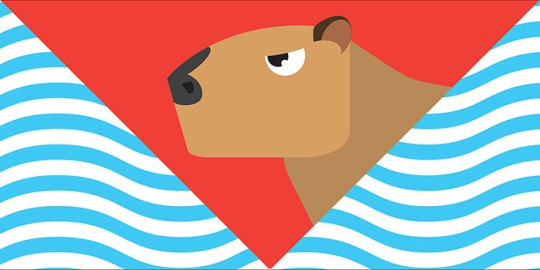
Corujinha-do-mato / Tropical screech-owl – Megascops choliba
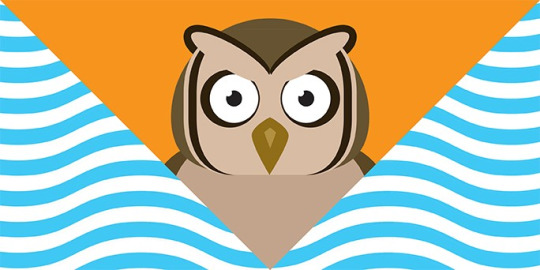
Borboleta 88 / Cramer’s eighty-eight butterfly – Diaethria clymena
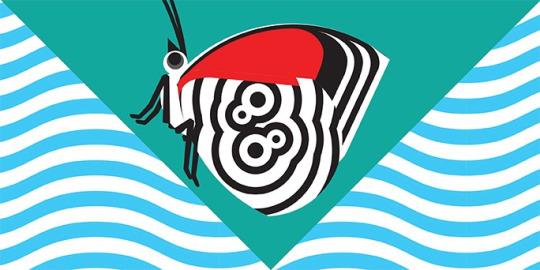
Bugio-ruivo / Brown howler monkey – Alouatta guariba

Jararacuçu / Jararacussu – Bothrops jararacussu
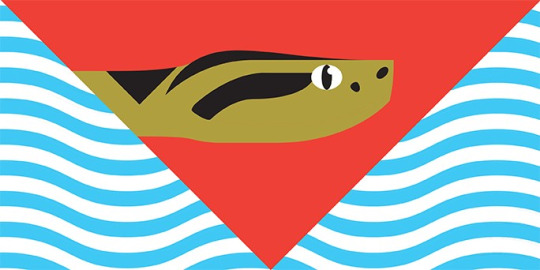
Tucano-de-bico-verde / Green-billed toucan – Ramphastos dicolorus
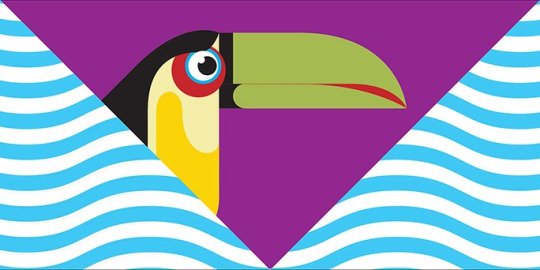
Preguiça-de-garganta-marrom / Brown-throated three-toed sloth - Bradypus variegatus
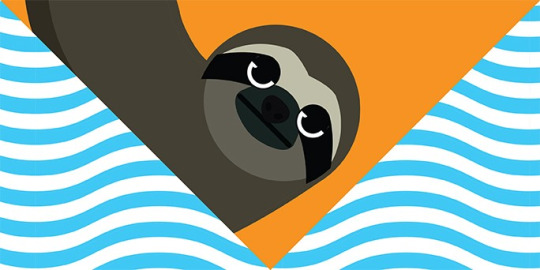
Beija-flor-de-orelha-violeta / White-vented violetear - Colibri serrirostris
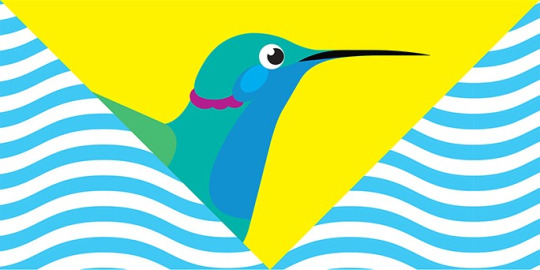
Anta-brasileira / South American tapir - Tapirus terrestris
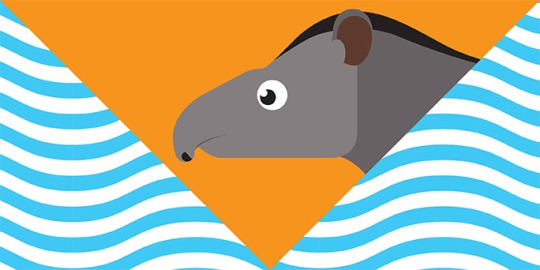
Saúva-limão / Leafcutter ant - Atta sexdens
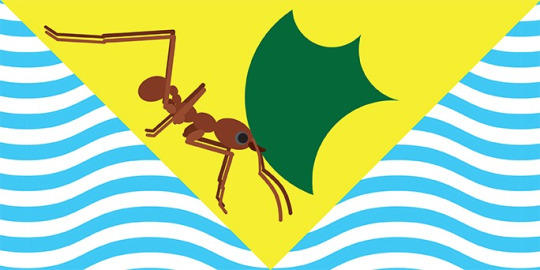
Tatu-galinha / Nine-banded armadillo - Dasypus novemcinctus
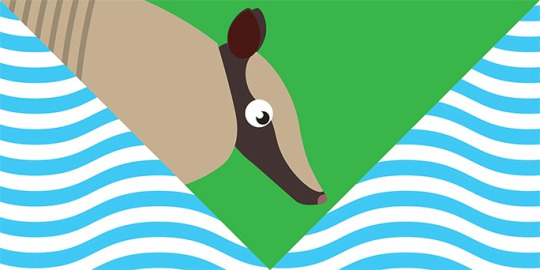
Onça-pintada / Jaguar - Panthera onca
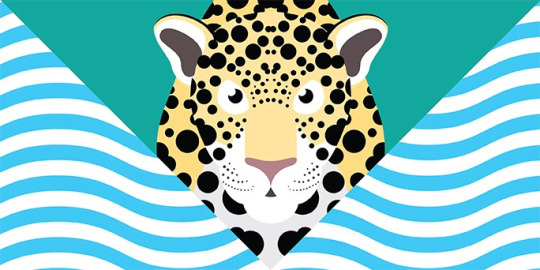
Periquito rico / Plain parakeet - Brotogeris tirica
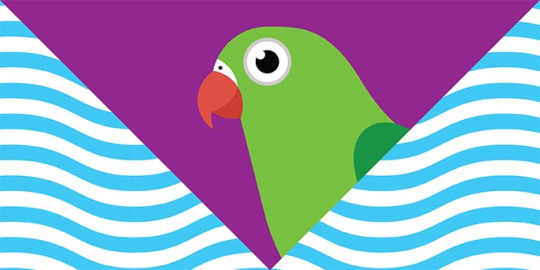
Macaco-prego / Black capuchin - Sapajus nigritus
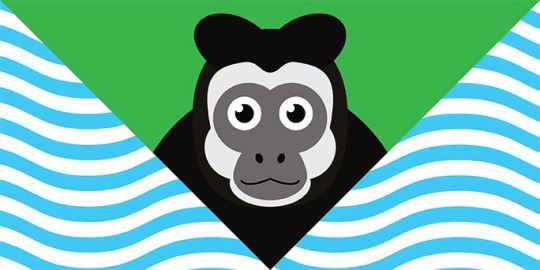
Rã-flautinha / Lutz's treefrog - Aplastodiscus albosignatus
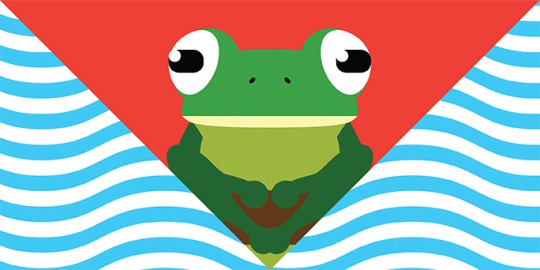
Morcego-beija-flor / Geoffroy's tailless bat - Anoura Geoffroyi
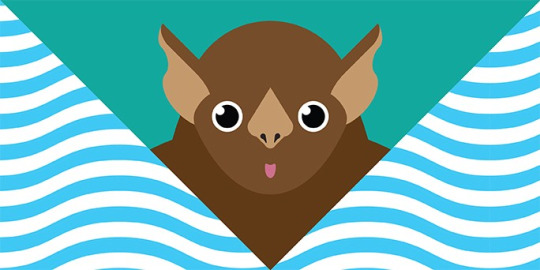
Jacutinga / Black-fronted piping guan - Pipile jacutinga

Quati-de-cauda-anelada / South American coati - Nasua nasua

When
We have already painted around 20% of the space beginning with the water pattern which included the participation of the school children and we believe the project will realistically take five months to finish.
This timeline is an estimate that can change depending on various factors. It also does not just reflect the time it will take to paint the mural but the time it will take to complete the project as a whole. This includes the other preparation work necessary such as: finalising the design and colour choices inline with paint available, preparing the large stencils, transferring the design onto the wall and organising participatory workshops with the school children inline with the school's timetable.
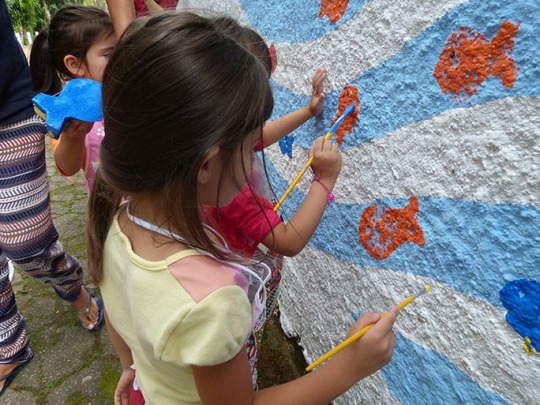
Objectives
To complete the painting of the mural through the participation of parents, children and local community members.
To transform the space, creating a sense of ownership, pride and community.
To strengthen the ties between the families and the school.
To run further sessions with each class so that every child in the school makes their mark on the mural.
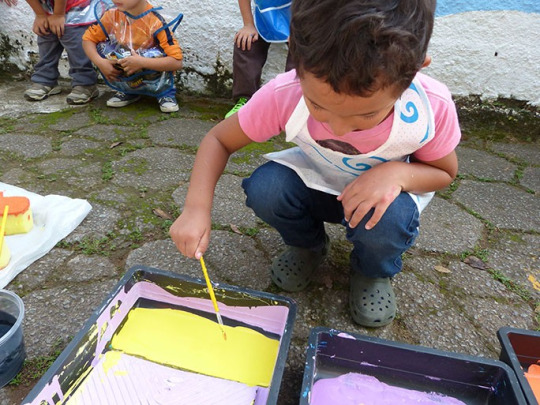
Funding
Until this point our community artist has given his time voluntarily to work on the project and we have been able to cover the cost of the paint and materials through fundraising events at the school. But with the scale of the mural and the time it will take to complete it this funding will to allow him to support himself whilst he completely dedicate his time to running the project with the school over the next five months.
We are looking for your help to raise £1000 to be able to fully realise the mural and achieve our objectives for the project.
This funding amount is based on the minimum monthly wage in Brazil which for 2019 is R$998.²
The average GBP-BRL exchange rate for the last 12 months has been 4.989.³
This equates to £200.04 per month, so a projected timeline of 5 months therefore gives a total of £1000.20
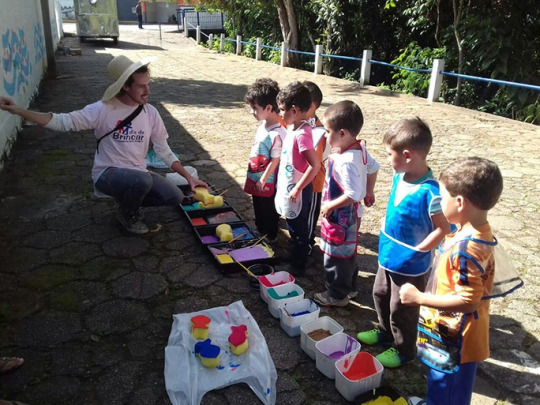
Perks
As a thank you for supporting the project we have come up with some amazing perks that includes the original artwork from the mural by our community artist Andy Câncio Bunce.
Remember to please include your name to be painted on the wall and address to receive the postcards, prints and posters in a message!
For the posters please include which animal you would like based on the designs featured on this page.
Name on the wall
Your name will be painted on the wall as part of our list of supporters for everyone to see and to show our appreciation of your donation. A photo of the names on the wall will be posted on here and our Instagram page for you to see once they have all been painted.
Thank you postcards
A handwritten thank you postcard sent directly from São Luiz do Paraitinga in Brazil, each one features an animal from the mural design. There is a total of five postcard designs, if choosing one or three the designs will be chosen at random.
Limited edition signed A4 print
Small print (210 x 297 mm) of the final mural artwork showing all 16 animals used with their common names in Portuguese and English and their scientific name. Printed on 250gsm matt couché (coated) paper. The prints are from a limited run 50 which will be numbered and signed by the artist.
A3 poster
Medium print (297 x 420 mm) of one of the animals from the mural artwork printed on 140gsm matt paper.
A2 poster
Large print (420 x 594 mm) of one of the animals from the mural artwork printed on 200gsm satin paper.
Delivery
Postcards and Prints will be sent after the crowdfunder has finished and should arrive within 2-4 weeks but could take longer depending on printing times.
Photos of the names on the wall will be published once the mural is completed.
If there are any problems with your perk/reward please get in contact so that we can resolve it quickly.
Updates
We will post regular updates on the project here on the crowdfunding page and also on our Instagram www.instagram.com/pintando_paredes/ so you can see the difference your help has made to the project and how the mural is progressing!
Thank you!
Thank you very much for taking the time to check out our crowdfunder. We will be very grateful for any donations, big or small, to help us realise this project!
Please share this crowdfunding page on your social media accounts to help us reach more people.
For any questions please email [email protected]
Thank you very much!
Media

References
¹ https://www.hertsad.co.uk/news/harpenden-artist-leads-project-inspired-by-rio-olympics-1-4670633
² http://www.brasil.gov.br/noticias/emprego-e-previdencia/2019/01/decreto-fixa-salario-minimo-de-r-998-em-2019
³ https://www.xe.com/currencycharts/?from=GBP&to=BRL&view=1Y
Perks

Level 1
Name on the wall
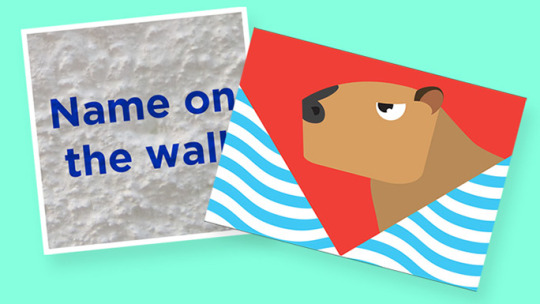
Level 2
1 x Thank you postcard from Brazil
Name on the wall

Level 3
3 x Thank you postcards from Brazil
Name on the wall
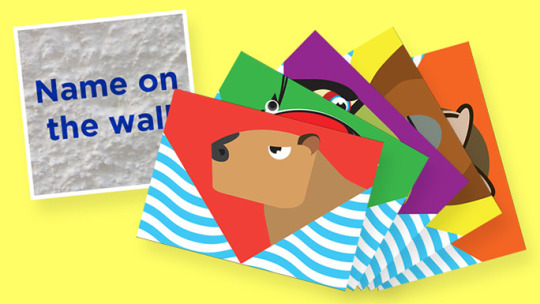
Level 4
5 x Thank you postcards from Brazil
Name on the wall
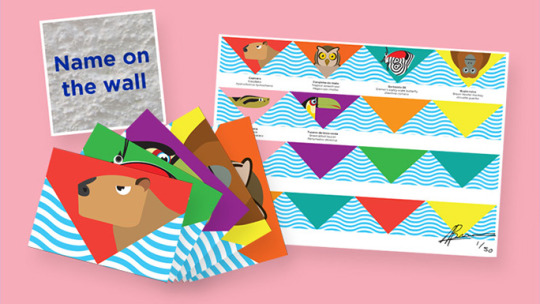
Level 5
Limited edition signed A4 print
5 x Thank you postcards from Brazil
Name on the wall
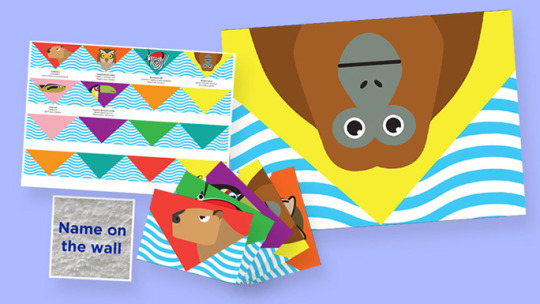
Level 6
A3 poster
Limited edition signed A4 print
5 x Thank you postcards from Brazil
Name on the wall

Level 7
A2 poster
Limited edition signed A4 print
5 x Thank you postcards from Brazil
Name on the wall
1 note
·
View note
Video
youtube
What are you hearing? From Cable Museum (in Cable, Wisconsin):
Spring and Summer in 22 seconds! In this animation, eight common species of frogs (including a toad!) give their calls through the season. Wood frog, boreal chorus frog, spring peeper, northern leopard frog, American toa, Gray treefrog, green frog, and bullfrog.
6 notes
·
View notes
Text
animals i’ve seen in my yard/neighborhood
groundhogs, which are Especially Cute when they sit on the stone benches in my mom’s garden
bluejays
woodpeckers, including yellowbellied sapsuckers, northern flickers, and downy woodpeckers
a badger, I’m petty sure, after it dug up my dead parakeet and ate it. (But also, I’m not sure that it was a badger bc apparently their range doesn’t usually extend this far southeast? But it definitely looked like a badger to me!)
eastern box turtles, which are a Vulnerable Species in the area!
numerous black rat snakes
dekay’s brown snakes
garter snakes
great horned ominously silhouetted against the night sky while perched on a bare tree branch
A raccoon being mercilessly harassed and divebombed by two mockingbirds
That same raccoon a few days later, except missing its tail and one of its back legs :(
common nighthawks swooping down and making “nyoom” sounds as they do so (seriously, look it up, it’s cray.)
turkey vultures on the gabled rooftop of the creepy house on the hill
red tailed hawks
great blue herons
turkeys running through the yard on the day before Thanksgiving
A barred owl on a power line at 2:30pm (except this was Down The Street from my neighborhood)
Bigass cicada larvae
Black widows in the grill pit
Five-lined skinks
Ruby-throated hummingbirds
cedar waxwings
Cardinals and their hatchling babies in the rose bush
gray catbirds and their hatchling babies in the morning glory
A lil katydid nymph
European hornets
Baldfaced hornets
Various paper wasp species
wood bees
honeybees
clearwing moths
hummingbird hawkmoths
American toads
Fowler’s toads
Leopard frogs
A species of greenish brown, semi-aquatic “true frog” that i still haven’t ben able to identify and haven’t seen in like 12 years, though I think it was probably just your average “green frog,” just very young/small
Gray treefrogs
Gray foxes
Red foxes
5 notes
·
View notes
Photo



North American Green Treefrog (Hyla cinerea), in a wetland in Northern Florida, USA
photographs by Dick Bartlett (used w/ permission)
32 notes
·
View notes